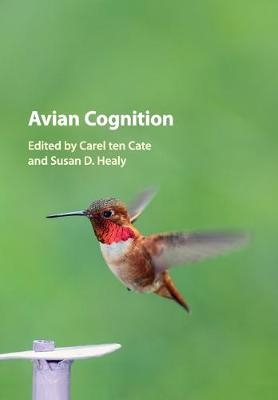
Avian Cognition
Cambridge University Press (Verlag)
978-1-107-46546-6 (ISBN)
The cognitive abilities of birds are remarkable: hummingbirds integrate spatial and temporal information about food sources, day-old chicks have a sense of numbers, parrots can make and use tools, and ravens have sophisticated insights in social relationships. This volume describes the full range of avian cognitive abilities, the mechanisms behind such abilities and how they relate to the ecology of the species. Synthesising the latest research in avian cognition, a range of experts in the field provide first-hand insights into experimental procedures, outcomes and theoretical advances, including a discussion of how the findings in birds relate to the cognitive abilities of other species, including humans. The authors cover a range of topics such as spatial cognition, social learning, tool use, perceptual categorization and concept learning, providing the broader context for students and researchers interested in the current state of avian cognition research, its key questions and appropriate experimental approaches.
Carel ten Cate is Professor of Animal Behaviour at Universiteit Leiden, the Netherlands. His research focuses on behavioural development and communication by vocal and visual signals in species ranging from birds and fish to humans. He also uses birds for comparative studies on the cognitive mechanisms relevant for speech and language processing in humans. Susan D. Healy is a Reader in Zoology at the University of St Andrews, Scotland and Executive Editor of Animal Behaviour. Her work integrates theoretical and empirical data from the fields of biology and psychology to investigate the behavioural ecology and neurobiology of animal cognition, with a focus on birds.
Preface Carel ten Cate and Susan D. Healy; 1. Introduction: avian cognition – why and what? Carel ten Cate and Susan D. Healy; 2. Spatial cognition in birds James F. Reichert, Sebastian Schwarz and Debbie M. Kelly; 3. Spatial cognition and ecology: hummingbirds as a case study Susan D. Healy and T. Andrew Hurly; 4. Food storing and memory David F. Sherry; 5. Avian cognition and the evolution of warning signals Candy Rowe, John Skelhorn, Christina G. Halpin; 6. Social learning and innovation Louis Lefebvre and Lucy M. Aplin; 7. Solving foraging problems: top-down and bottom-up perspectives on the role of cognition Andrea S. Griffin and David Guez; 8. Objects and space in an avian brain Giorgio Vallortigara and Cinzia Chiandetti; 9. Physical cognition and tool use in birds Alice Auersperg, Irmgard Teschke and Sabine Tebbich; 10. Avian numerical cognition: a review and brief comparisons to non-avian species Irene M. Pepperberg; 11. Mechanisms of perceptual categorization in birds Ludwig Huber and Ulrike Aust; 12. Relational concept learning in birds Leyre Castro and Edward A. Wasserman; 13. The linguistic abilities of birds Carel ten Cate; 14. Avian vocal perception: bioacoustics and perceptual mechanisms Neil McMillan, Marc T. Avey, Laurie L. Bloomfield, Lauren M. Guillette, Allison H. Hahn, Marisa Hoeschele and Christopher B. Sturdy; 15. Sing me something: does song signal cognition? Neeltje J. Boogert; 16. Avian social relations, social cognition and cooperation Thomas Bugnyar and Jorg J. M. Massen.
| Erscheint lt. Verlag | 18.6.2020 |
|---|---|
| Zusatzinfo | 3 Tables, black and white; 62 Halftones, black and white; 46 Line drawings, black and white |
| Verlagsort | Cambridge |
| Sprache | englisch |
| Maße | 245 x 170 mm |
| Gewicht | 600 g |
| Themenwelt | Naturwissenschaften ► Biologie ► Evolution |
| Naturwissenschaften ► Biologie ► Zoologie | |
| Veterinärmedizin | |
| ISBN-10 | 1-107-46546-X / 110746546X |
| ISBN-13 | 978-1-107-46546-6 / 9781107465466 |
| Zustand | Neuware |
| Informationen gemäß Produktsicherheitsverordnung (GPSR) | |
| Haben Sie eine Frage zum Produkt? |
aus dem Bereich


